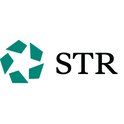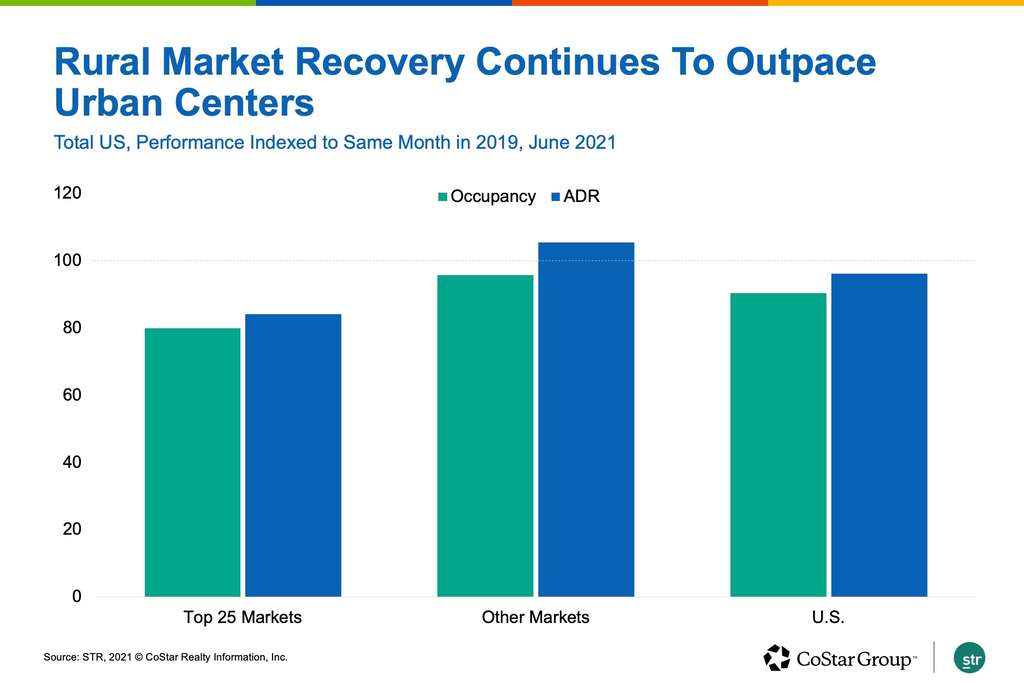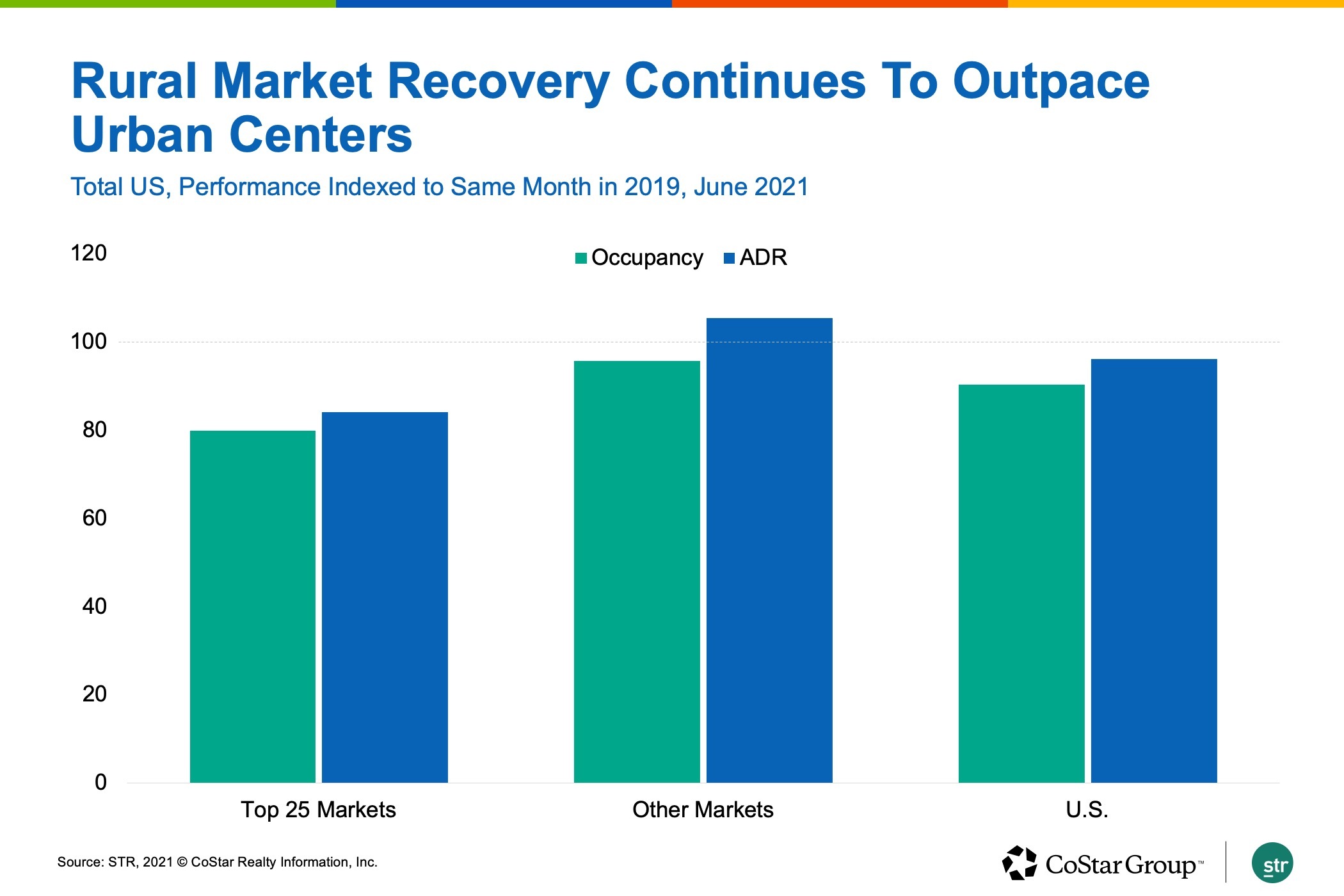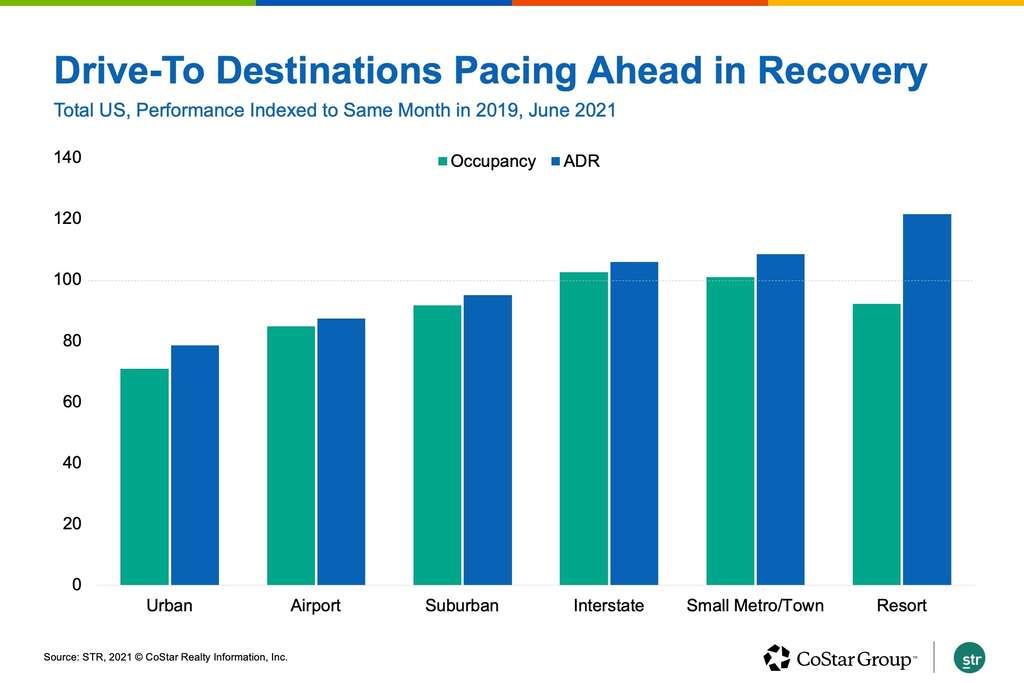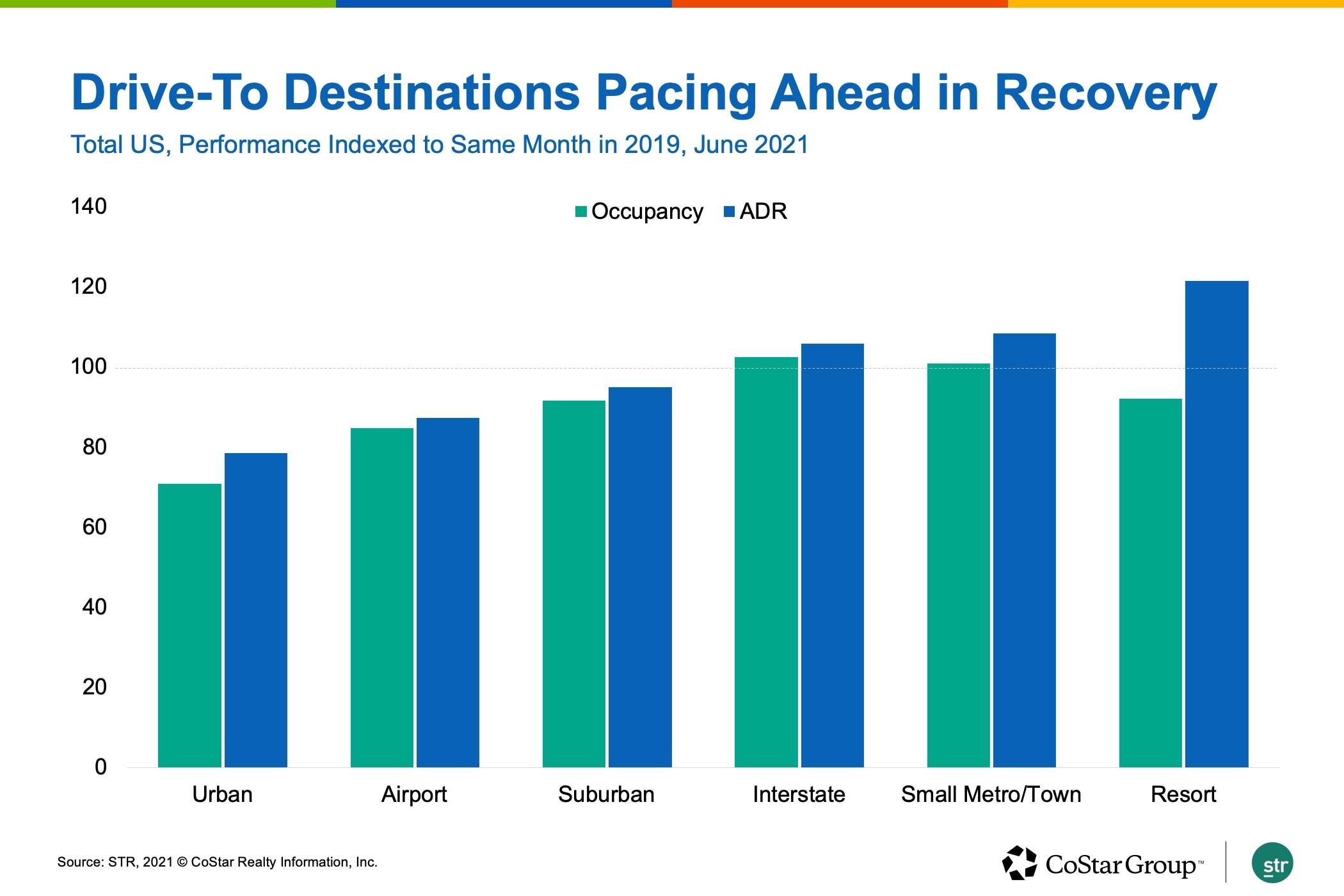US Hotel Industry Recovery Faster In Smaller Markets Than In Big Cities
Pandemic Has Shifted Travel Patterns To Favor US Rural Markets, Drive-To Destinations
Prior to the COVID-19 pandemic, urban hotels and hotels located in STR’s top 25 markets led the U.S. in performance, with high occupancy and higher rates courtesy of the leisure and business travelers who flocked to these metro centers.
However, as the U.S. slowly emerges from the COVID-19 pandemic, the smaller, less-traveled markets and locations are recovering fastest, due in part to the pandemic’s impact on travel patterns.
Travel has started to rebound in the 25 largest hospitality markets in the U.S., where hotel revenue per available room was at 67% of its 2019 level in June 2021. In the other 141 markets, RevPAR increased $0.62 from 2019.
Non-top 25 markets reported occupancy only three percentage points below the comparable 2019 figure, and that strong demand — driven by leisure travelers in search of a bucolic vacation — helped drive average daily rate more than $6 above its pre-pandemic level. While the top 25 markets weren’t exempt from the summer leisure travel surge, vacationers there couldn’t fill the gap left by business travel and group demand, and the recovery as indexed to 2019 could not compare with that of the secondary and tertiary markets.
In top 25 markets and beyond, travelers chose the hotels most easily accessible by car last month, with small town and interstate hotels reporting occupancy and ADR higher than what it was in summer 2019.
Resort markets such as Scottsdale, Arizona, and Hilton Head/Beaufort, South Carolina, also performed well in June, as pent-up demand for beach and other outdoor leisure-focused markets lent hoteliers pricing power despite occupancy being six points below June 2019.
However, even urban and airport-adjacent hotels reported ADR indexes ahead of occupancy indexes, suggesting that hoteliers in all locations have shifted focus onto rates rather than occupancy to take advantage of the more highly rated leisure traveler.
With six weeks left until the summer ends, non-top 25 markets and drive-to destinations will continue to push the envelope on recovery, and their historic reliance on leisure demand should lend them resilience post-Labor Day.
Kelsey Fenerty is a research analyst at STR.
This article represents an interpretation of data collected by STR, CoStar's hospitality analytics firm. Please feel free to contact an editor with any questions or concerns.
About STR
STR provides premium data benchmarking, analytics and marketplace insights for the global hospitality industry. Founded in 1985, STR maintains a presence in 15 countries with a corporate North American headquarters in Hendersonville, Tennessee, an international headquarters in London, and an Asia Pacific headquarters in Singapore. STR was acquired in October 2019 by CoStar Group, Inc. (NASDAQ: CSGP), the leading provider of commercial real estate information, analytics and online marketplaces. For more information, please visit str.com and costargroup.com.
